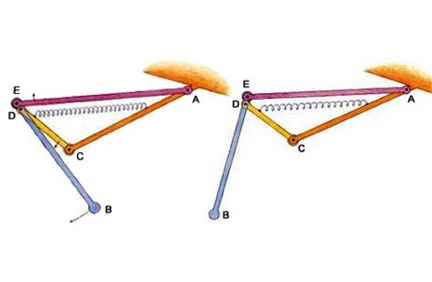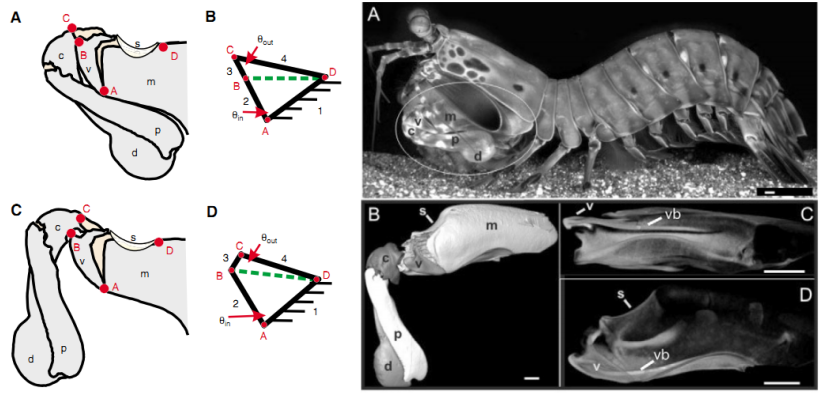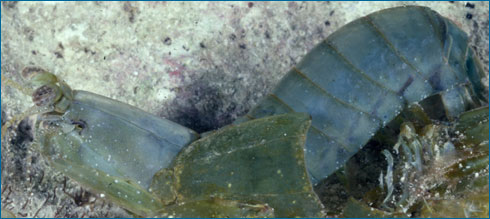Mantis Shrimp: A Deceptive Foe
Biology 342 Fall 2012
Will Horner, Jules Weinstein
Mechanism
Mechanism: When the mantis shrimp is forced to shed its exoskeleton, it is no longer able to utilize its powerful punching or stabbing arms, rendering it defenseless until it hardens (9).

Picture from http://www.naturalhistorymag.com.

Picture from http://syntheticdaisies.blogspot.com.
The mantis shrimp is able to pack an extremely powerful punch through a spring mechanism by utilizing a saddle-shaped piece of chitin. Bunching up muscles “cock” the saddle in the upright position which is then is released, triggering a quick jab or smash from the longer, lever-like arm(5). The above picture is a representation of the skewer type arm, which is used to stab prey.

Picture from http://syntheticdaisies.blogspot.com.
The above picture is a representation and image of the club type arm, which is used to smash prey. The fast speed of the strike is responsible for a sizable amount of impact, but even great forces are also produced by bursting cavitation bubbles, which produce a powerful shockwave (5). The video below shows the force exerted by a stomatopod's punch. The first spike is due to the impact itself; the second spike is the force due to the cavitation bubble.
Video from Youtube.com.
 Unfortunately for stomatopods, they are crustaceans and therefore need to molt regularly to grow their exoskeleton(3). Molting occurs in all arthropods, and is the process by which they grow (3). Since the exoskeleton is hard, it must be removed and replaced by a new exoskeleton for the organism to grow (3).
Unfortunately for stomatopods, they are crustaceans and therefore need to molt regularly to grow their exoskeleton(3). Molting occurs in all arthropods, and is the process by which they grow (3). Since the exoskeleton is hard, it must be removed and replaced by a new exoskeleton for the organism to grow (3).
In this process, the old exoskeleton is detached from the epidermis of the organism and is replaced when the epidermis secretes a new one (3). However, this new exoskeleton needs time to harden, or tan, which only occurs once the old exoskeleton is removed.
A stomatopod molting. The old exoskeleton (cuticle) is visible in the lower middle of the picture. Image from http://evolution.berkeley.edu.
In the post molting period, the stomatopod is unable to use their hammer-like arms. Due to the weakness of the exoskeleton, utilizing their weapons would actually injure the animal due to the forces of the muscles, possible ripping and ruining the arm (6,11). The ensuing shockwave causes additional damage when their powerful carapace is not complete (6,11). For this reason stomatopods require false threat displays during their molting period.